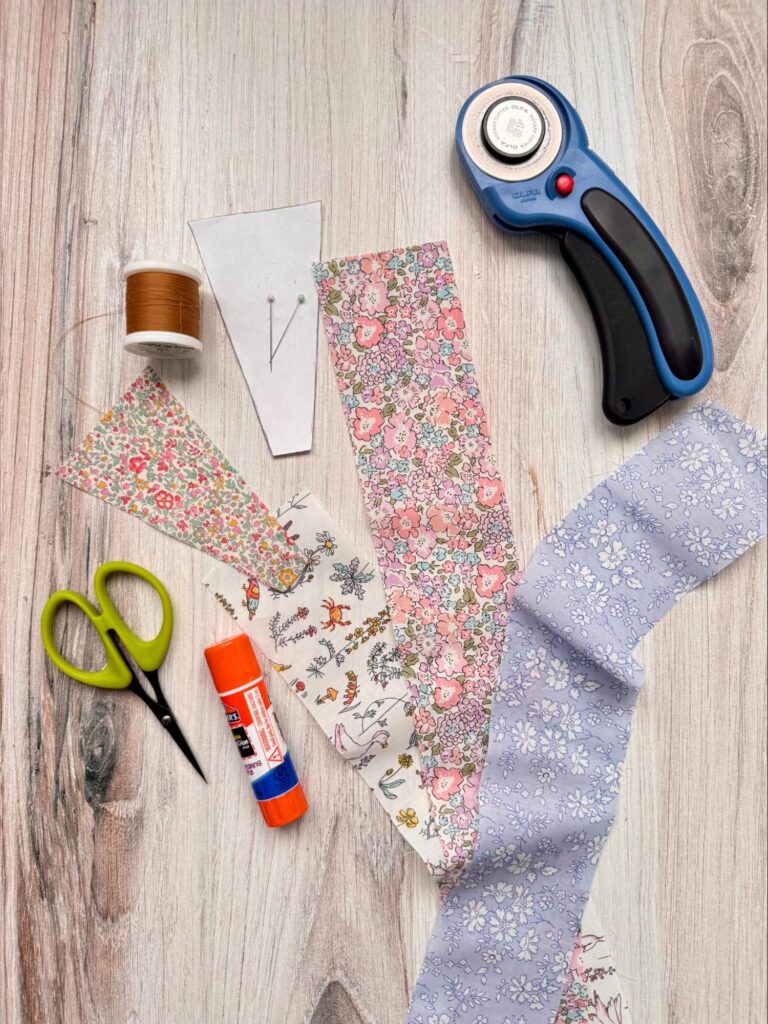If you’ve ever looked at a Dresden Plate quilt block and thought, “That looks way too complicated for me”—I get it. All those little fabric blades coming together in a perfect circle? It seems like quilting magic. But here’s the truth: making a Dresden Plate is way easier than it looks, and I’m going to show you how!
This classic quilt block is a stunner, whether you go full vintage with floral fabrics or modern with bold solids. Either way, by the end of this tutorial, you’ll be confidently stitching up Dresdens like a pro (and maybe even impressing your quilting friends along the way). Let’s dive in!
What is a Dresden Plate?
A Dresden Plate is a circular quilt block made from petal-shaped fabric pieces (called “blades”) arranged in a circle. You can sew it onto a background fabric as a whole circle or even a half or quarter Dresden for a unique look.
History of the Dresden Plate
The Dresden Plate quilt block has been charming quilters for over a century, but did you know it wasn’t always called that?
This beautiful, circular design became especially popular in the 1920s and 30s, a time when quilters loved using scrap fabrics to create intricate, eye-catching patterns. While today we call it the Dresden Plate—named after the ornate porcelain designs from Dresden, Germany—it originally went by other names like “Sunburst” and “Grandmother’s Sunburst.”
No matter what you call it, this block has stood the test of time, proving that a good quilt pattern never goes out of style!
Supplies You’ll Need
Before we begin, gather the following materials:
- Fabric scraps or fat quarters (various prints for the blades)
- Background fabric (solid or coordinating print)
- Dresden template (GET HERE)
- Rotary cutter and mat
- Fabric scissors
- Thread (coordinating or contrasting)
- Pins or fabric glue
- Iron and ironing board
- Sewing machine

Step 1: Cut Your Dresden Blades
Using a Dresden ruler, cut multiple fabric blades. The standard Dresden Plate has 12-20 blades, depending on your ruler size. The more blades, the fuller the plate will look.
- Lay your fabric flat and align the ruler with the grain.
- Use a rotary cutter to cut out the shapes.
- Cut all your blades before moving to the next step.
Step 2: Sew the Blade Tips
To give each blade a pointed tip, fold each blade in half, right sides together. Sew a straight line across the top and bottom of each blade using a ¼-inch seam allowance. TIP: Lower your stitch length to 1.6. rr similar stitch length to help hold better.
- Turn the blade right side out and press with an iron to create a sharp point.
- I recommend using a point turner for this to get a nice, pointed dresden blade. What I used is found HERE.
- Once each blade is pointed, use an iron to press and hold each blade in place.
Step 3: Assemble the Dresden Plate
Once all the blades are sewn and pressed, arrange them in a circular pattern on your work surface. Make sure you like the arrangement. Then:
- Sew the blades right sides together (RST), one at a time, along the long edges using a ¼-inch seam allowance.
- Continue sewing one pedal at a time, RST, until the full circle is formed.
- Press all seams open or to one side.
Step 4: Attach the Dresden Plate to the Background Fabric
Position your completed Dresden Plate onto your background fabric. Pin it in place or use fabric glue for extra stability.
- Topstitch or applique around the outer edge.
- NOTE: Sew the inner edge first, then the outer edge of the dresden. This will help your Dresden Plate to lay flat and not bunch up.
- I sewed the inner edge first, then glued the Dresden Plate, ironed it flat, and sewed the outer edges.
- Use a straight stitch, zigzag, or decorative stitch to secure it.
- I used a straight stitch and sewed very close to the outter edge of the plate.
Step 5: Finishing Touches
Now that your Dresden Plate is complete, you can:
- Use it as a quilt block in a larger quilt.
- Turn it into a pillow, wall hanging, or table topper.
- Add embroidery or decorative stitching for extra flair.
- Add one to clothing or a bag to embellish your item.
Final Thoughts
The Dresden Plate is a stunning block that offers endless possibilities. By mixing and matching fabrics, playing with different sizes, and experimenting with layouts, you can create a truly unique design.
Have you made a Dresden Plate before? Let me know in the comments!
Did you like this blog post? Be sure to check out these other popular tutorials: